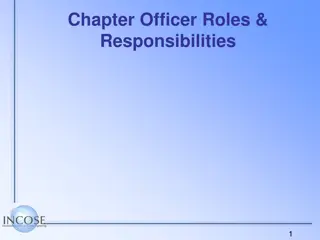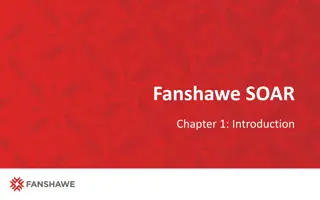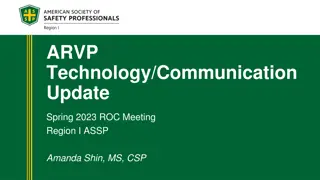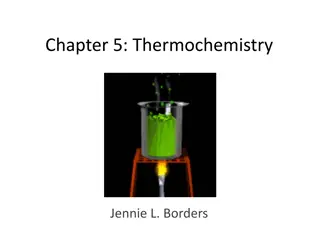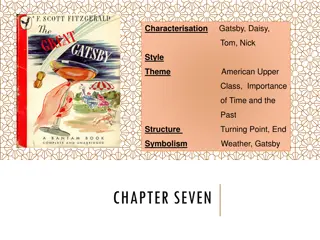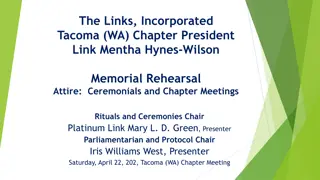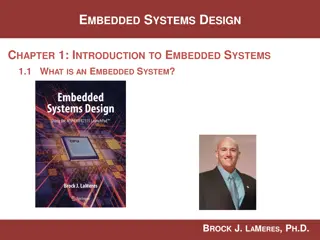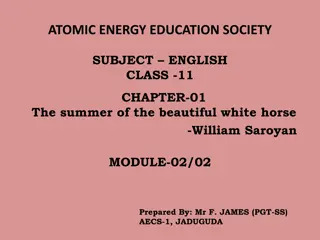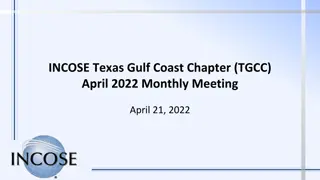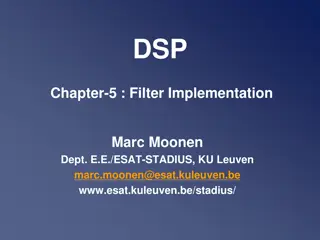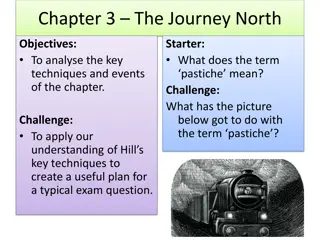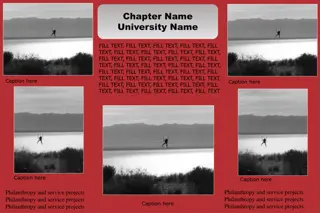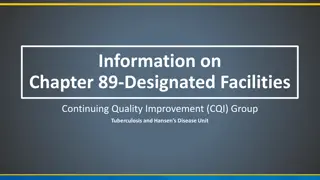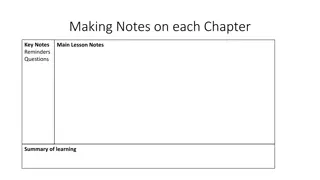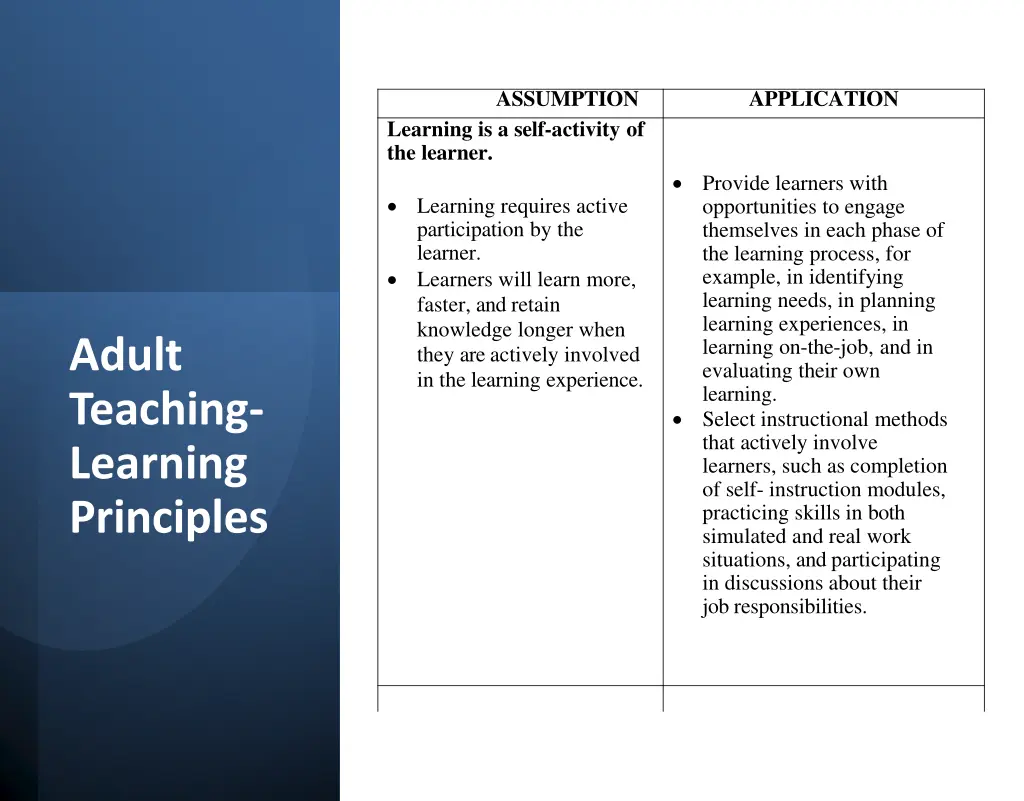
Active Learning Principles for Effective Education
Enhance learning experiences with active participation and personalized approaches. Engage learners in identifying needs, planning, practical exercises, and self-evaluation. Encourage intentional goal-setting and interactive learning methods for holistic development.
Download Presentation

Please find below an Image/Link to download the presentation.
The content on the website is provided AS IS for your information and personal use only. It may not be sold, licensed, or shared on other websites without obtaining consent from the author. If you encounter any issues during the download, it is possible that the publisher has removed the file from their server.
You are allowed to download the files provided on this website for personal or commercial use, subject to the condition that they are used lawfully. All files are the property of their respective owners.
The content on the website is provided AS IS for your information and personal use only. It may not be sold, licensed, or shared on other websites without obtaining consent from the author.
E N D
Presentation Transcript
ASSUMPTION APPLICATION Learning is a self-activity of the learner. Provide learners with opportunities to engage themselves in each phase of the learning process, for example, in identifying learning needs, in planning learning experiences, in learning on-the-job, and in evaluating their own learning. Select instructional methods that actively involve learners, such as completion of self- instruction modules, practicing skills in both simulated and real work situations, and participating in discussions about their job responsibilities. Learning requires active participation by the learner. Learners will learn more, faster, and retain knowledge longer when they are actively involved in the learning experience. Adult Teaching- Learning Principles
APPLICATION ASSUMPTION Learning is intentional. Ask orientees to identify their personal goals for learning during each week of the preceptorship. Make every effort to meet these goals and to monitor their weekly attainment. Suggest that new employees keep a notebook to write down questions or problems that they encounter during the preceptorship, so that these can be addressed when preceptees meet with their preceptor. Learning typically does not occur by accident, but through a concerted and purposeful effort by the learner. Learning is a goal-directed activity, which aims at meeting the learner s needs for learning. Learning is most effective when it is directed at objectives that the learner views as meaningful and useful.
ASSUMPTION APPLICATION Learning is an active and interactive process. Augment or replace passive teaching methods with methods that employ active participation in learning. Use hands-on learning experiences to maximize the amount of learning gained and retained. Construct realistic case studies that provide opportunities for new staff to use critical thinking, problem solving, and decision- making skills. John Dewey s maxim that, we learn by doing, is as true today as it was when first promulgated in 1916. Learning is a dynamic process that requires active participation and a desire to learn; the more engaged learners are in this process, the more effectively they will learn. Some teaching methods such as reading, lectures, and audiotapes provide passive learning experiences that minimize the learner s interactions. Other teaching methods such as role playing, simulation exercises, and return demonstration of skills provide active learning experiences that maximize the learner s interactions.
APPLICATION ASSUMPTION Learning is a holistic process. Take differences among learners into account as much as possible in planning learning experiences. Provide for variable interests, opinions, learning media options, formats, and paces of instruction. Modify teaching and learning experiences to accommodate any sensory limitations learners may have. Be sensitive to the need to modify teaching if learners are experiencing personal (financial, family, social, or health) problems that might impede their ability to learn. Make the environment as conducive (comfortable, friendly, nonthreatening, and supportive) to learning as possible. The learner responds to teaching- learning situations as a whole entity. Learners are influencedby their physiological, psychological, and educational makeup, as well as by their social and physical environment. Individuals vary in what they need to learn, how and the speed at which they prefer to learn, how comfortable they are with the learner role, and in many other ways.
ASSUMPTION APPLICATION Learning is influenced by the motivation of the learner. Ask preceptees what their short and long term career goals are and how the current employment aligns with these goals. Foster intrinsic motivation by providing opportunities for success and by keeping performance expectations realistic. Minimize the use of negative extrinsic motivators for learning. Rekindle motivation for learning by explaining the relevance of learning experiences that preceptees do not view as pertinent to their job and by offering examples of applications that are familiar to them. Learning is more readily acquired and retained when learners have a strong and sustained desire to learn. Motivation for learning is enhanced when learners can participate in identifying their needs and in planning to meet those needs. Positive intrinsic motivators, such as self-satisfaction, feelings of competence, adequacy, accomplishment, or prestige, enhance learning more than negative extrinsic motivators, such as threats, criticism, denial of salary increases, or punishments. Continue
The experience of success in learning is one of the strongest motivators for continued learning. Motivation for learning does not remain constant, but may wax and wane for different reasons, including fatigue and stress, or not perceiving the relevance of certain learning experiences. Therefore, motivation may need to be reignited at various times.
ASSUMPTION APPLICATION Learning is influenced by the readiness of the learner. Learning readiness refers to a complex state of physical, psychological, and intellectual preparedness for learning. Being new in a job is typically associated with a high state of readiness to learn what the job requires and how to perform the job effectively. Learning readiness may be overtly manifested by preceptees who relate that they are eager to learn a new skill, or covertly by preceptees who ask questions about or encounter problems in performing certain aspects of their job. Before teaching a new job responsibility, verify that the orientee has obtained prerequisites, that is prior knowledge, skills, and experiences, needed to learn more about that area. Take advantage of new employees readiness to learn by asking what they would like to learn for each week of the preceptorship. Enhance readiness by indicating how useful, meaningful, and worthwhile specific learning experiences are to the orientee s job.
ASSUMPTION APPLICATION Learning is social. Communicate with an open-minded and nonjudgmental attitude. Respect differences of opinion. Allow new staff to make and learn from their mistakes. Create a relaxed yet supportive atmosphere. Get to know orientees as individuals. Be available when orientees need assistance. Offer critique constructively. Exercise patience with orientees. Learning is a shared responsibility between teachers and learners. Preceptors can facilitate learning via their social interactions with new staff by relating to them as trustworthy and supportive colleagues who deserve recognition and welcoming into the work site.
ASSUMPTION APPLICATION Learning is influenced by the learning environment. The learning environment includes both the physical surroundings and the psychological climate of a learning situation. The physical environment can facilitate learning when it includes adequate lighting, temperature control, and acoustics; when media can be readily seen and heard; and when learners are comfortable in their seating and workspace. The psychological environment can facilitate learning when it meets the social aspects mentioned in the preceding (Learning is social) section. Ensure that orientees can see and hear the provided instruction. Encourage new staff to ask questions and to challenge practices. Provide opportunities for orientees to practice difficult or complex skills and to make mistakes in a protected setting, such as a simulated work site or situation, before being required to perform these skills in a real work situation. Minimize distractions such as side conversations and extraneous noise that may interfere with learning. Provide a comfortable, relaxed, nonjudgmental atmosphere throughout the preceptorship.
ASSUMPTION APPLICATION Learning proceeds best when it is organized and clearly communicated. Organizing a learning experience refers to deciding the order in which learning is to occur and preparing all materials and activities so that they are ready when needed. Organizing principles make learning easier to acquire, to integrate, and to transfer to new situations. Effective organization also requires clear communication so that all participants understand the objectives, content, location, and type of learning activities planned, as well as how, where, and when preceptees will be evaluated. Developing a written schedule for learning activities can assist the preceptor, preceptee, and any other staff who may participate in the preceptorship to prepare for these experiences. Divide the total number of learning experiences to be provided into small units of instruction. Use appropriate organizing principles, such as easy to hard, known to unknown, and first to last step, to determine the sequence of these instructional units. Prepare and distribute a written schedule of learning activities, which includes the date, time, location, topic, and instructor, to all participants in the preceptorship. Ensure that all teaching aids, such as media, practice exercises, and flipcharts, are ready when they are needed.
APPLICATION ASSUMPTION Learning is facilitated by positive and immediate feedback. Plan opportunities for preceptees to experience as much success in learning as possible. Ask them to demonstrate already familiar skills before they demonstrate new skills; verbally review how to performa procedure with preceptees before they perform it; or pace learningactivities to allow time for orientees to develop their expertise. Be generous in offering support, approval, and praise. Provide criticism in a constructive manner by first identifying what was done properly and then clarifying how to improve other aspects of performance. Timely rewarding of desired work behavior tends to ensure that the behavior will recur. The optimal time to reinforce good performance is at the time that it occurs. Successful performance of a newly learned or refined skill affords a strong motivating influence on continued learning. Positive feedback is intended to perpetuate good performance and can take many forms, including verbal praise or recognition, encouragement, or written comments.
APPLICATION ASSUMPTION Learning is retainable and transferable. Review new information shortly after it is initially presented. Limit content to what is necessary in a given situation and do not overwhelm the orientee with unwarranted detail. Summarize information frequently and before proceeding to the next learning activity. Set some time aside each day to review what has been learned to date. Provide a sufficient number of practice sessions to solidify and to integrate learning. Plan learning activities so that they build on previous experiences at increasingly more difficult or complex performance levels. Retention and transfer of learning to new situations can be increased by early review and frequent summary of the learned material. For example, when orienting a new nurse to the unit s patient admission process, the preceptorcould first review and explain the various activities that need to be completed before having the orientee demonstrate them. After the demonstration, the preceptor could summarize the admission process. Continue
Emphasis on principles and general concepts facilitates retention and transfer of learning. Introduce general principles, such as guidelines, processes, concepts, and rules, before exceptions to general principles are introduced.For example, it is easier to learn the usual process for patient admission before attempting to learn how this process may differ for emergency, transfer, or other types of special admissions. The premature introductionto exceptions tend to confuse learners, who may be easily overwhelmed by unnecessary details provided too soon.
ASSUMPTION APPLICATION Learning is creative. Encourage orientees to reflect on the degree to which their preceptorship experiences have reshaped their previous experiences and understanding. Explain relationships between old and new concepts and practices, and clarify any misconceptions that preceptees may have to bridge those differences. Inquire about any discrepancies that may exist between old and new practices and discuss these openly and nondefensively. Try to resolve discrepancies by clarifying the rationale for local differences in practice or by encouraging the new staff member to investigate and propose changes. Learning is a continual process of integrating new learning with existing knowledge; learners modify, add to, or delete what they previously believed to be true. As a result, learning continuously recreates what we understand and how we perform. Learners integrate new learning with old learning with varying speed and effectiveness. Continue
Knowledge and work practices that have been applied for many years are harder to unlearn than more recent learning. As a result, new graduates without work experience as staff nurses have little need to unlearn because their experience is limited to their student activities, whereas experienced orientees may have considerable amounts to unlearn if their new employer s procedures differ significantly from what they have been accustomed to. Experienced workers may also resist learning that conflicts with their prior understanding and experiences.
ASSUMPTION APPLICATION Learning is inferred rather than observed. All major job behaviors are included. The behaviors match the employer s expectations for job performance. All behaviors that can be appraised via actual job performance appear on the performance checklist. Only selected behaviors (too infrequent, too dangerous, or not readily accessible behaviors) are included for simulated demonstration. All necessary knowledge related behaviors are included in the written test(s). Learning cannot be directly observed, but is inferred on the basis of a change in behavior. These changes in behavior may be demonstrated verbally, in writing, or in simulated or actual work performance. Assessment and evaluation tools constructed for the preceptorship should reflect both identification of which behaviors must be demonstrated and how these must be demonstrated. In general, written tests require orientees to demonstrate that they possess the knowledge and attitudes requisite for their job, whereas performance checklists require that orientees demonstrate that they can perform the skills and procedures in either simulated or real work situations. Continue
The best way to determine whether new employees can do their job is to observe and to evaluate actual job performance by comparing the behaviors observed against a set of predetermined performance criteria. The next preferable approach is to observe simulated performance of those behaviors. The least valid approach is using a written test to determine whether employees have the required knowledge because written tests only indicate knowledge rather than actual competency. To verify that new staff members can perform their job, all customary and major job behaviors should be included in the evaluation tools of an orientation program.
ASSUMPTION APPLICATION Learning is influenced by the nature and variability of the learning experience. Preceptors are free to use any type of learning activity that is suitable for the content and skills to be developed or refined. Classroom teaching methods such as lectures, discussions, conferences, and seminars may be used to give information on various topics; self-instruction via computer based videodisks may be used to provide practice in resolving common problems related to a job; role playing and mannequins may be sued to provide practice in learning technical skills; and actual job performance may be used to evaluate transfer of those skills to real work situations. Because of the individual variability in learning, variation in the types of learning experiences should be provided during the preceptorship. Variability is also needed because persistent use of the same learning activities eventually leads to boredom and diminished learner interest. Avoid planning for the prolonged use of any one type of learning activity, especially passive activities such as listening to audiotapes, viewing videotapes, or reading policies and procedures. To the extent possible, include orientees suggestions and preferences regarding the types of learning activities they prefer. Maintain learner interest throughout the preceptorship by planning a diversity of learning activities that include varying degrees of active learner participation, hands-on learning, and novel activities, for example, locally developed games and interactive computer-based learning. Alspach, JoAnn. "Chapter 8." From Staff Nurse to Preceptor: A Preceptor Development Program. Aliso Viejo, CA: AACN Critical Care Publication, 2000. N. pag. Print.


